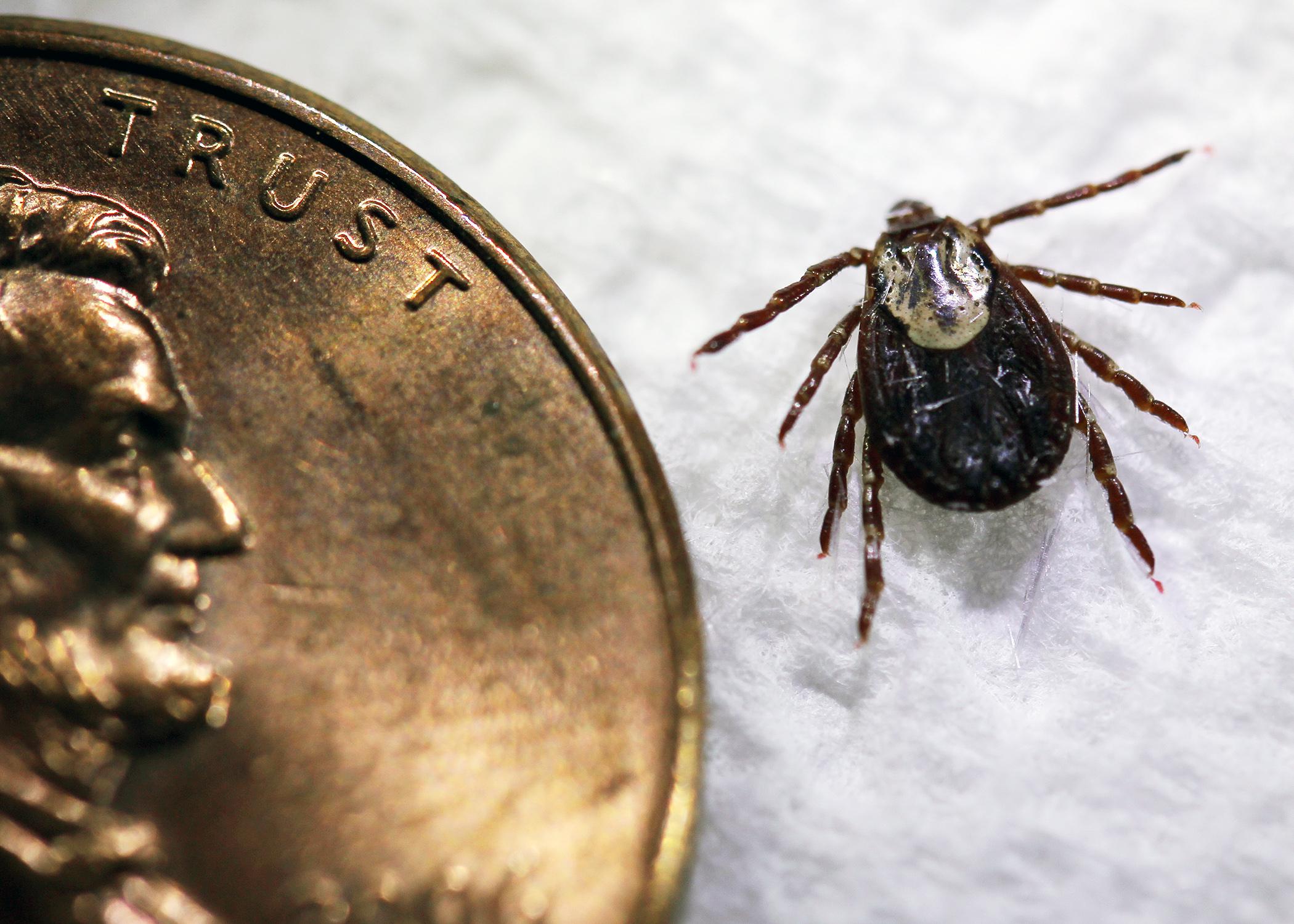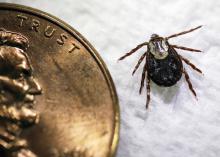Information Possibly Outdated
The information presented on this page was originally released on July 25, 2014. It may not be outdated, but please search our site for more current information. If you plan to quote or reference this information in a publication, please check with the Extension specialist or author before proceeding.
Don't let ticks spoil a good time
Mississippi summers evoke thoughts of family vacations, rainy days and outdoor explorations. But with the heat and humidity come tiny critters that, if not discovered quickly, can ruin a fun day.
Nineteen species of ticks exist in Mississippi, but only a few are known to bite humans.
In Mississippi, the lone star tick -- or deer tick -- is the most common tick species. The adult stage is frequently found on white-tailed deer. It is present in all 82 counties and is most active in late summer and early fall. Deer ticks that feed on white-footed mice infected with Lyme disease ingest the bacterium and may pass it to humans.
Two other common tick species are the American dog tick and the brown dog tick. While their preferred host might be Fluffy the poodle, they won’t pass up a chance to latch onto Fluffy’s human companion. Both tick species are primary vectors of Rocky Mountain spotted fever.
To decrease the chance of tick bites, wear light-colored clothing. This makes it easier to spot ticks. Wear long-sleeved shirts and closed-toed shoes, and tuck pant legs into socks. If you’re not opposed to applying insect repellent, spray your clothes -- but not your skin -- with a repellent that contains permethrin. Apply repellants containing DEET to skin, but wash them off as soon as you return indoors.
Ticks that are not already attached to an animal host will hang out on the tips of grasses and low shrubs looking to hitch a free ride and an easy meal. Check your body for ticks as soon as you return indoors. The longer a tick feeds, the greater the chance of disease transmission.
So what do you do if you find one of these eight-legged creatures dining on you or a loved one?
You may have been taught to coat the tick with clear nail polish or petroleum jelly or burn it off with a hot match, but these methods are not effective. They may even make the problem worse. For example, touching a feeding tick with a hot match may cause it to burst or even regurgitate infected fluids into the wound, increasing the risk of exposure to a disease pathogen.
The recommended removal method is to use blunt tweezers to grab the tick as close to the skin as possible and slowly pull up with steady, even pressure. Once the tick is removed, immediately disinfect the bite site and wash your hands with soap and water. The infectious agents carried by ticks can enter the skin through mucous membranes or tiny cuts.
If a tick bites you, pay close attention in the following days for any physical symptoms that may indicate disease transmission.
Rocky Mountain spotted fever symptoms may occur within 2 to 9 days after an infected tick bites a human. Symptoms include sudden fever, severe headache, muscle pain and a rash on the palms or soles of feet. Some symptoms are more common than others, and some, such as the rash, may not appear at all.
Lyme disease symptoms are a bit trickier to spot. The most common indicator is flu-like symptoms -- headaches, swollen lymph nodes, stiff joints and muscles, fatigue and low-grade fever -- sometimes accompanied by a bull’s-eye-shaped rash around the site of the bite. If detected early, antibiotics can cure Lyme disease. If left undiagnosed or untreated, late stage Lyme disease can become quite painful and debilitating.
For more information, download Mississippi State University Extension Service publication 2296, Lyme Disease in Mississippi.

Editor’s Note: Extension Outdoors is a column authored by several different experts in the Mississippi State University Extension Service.




